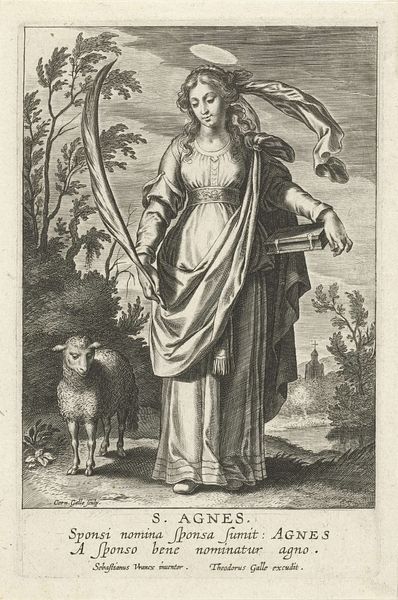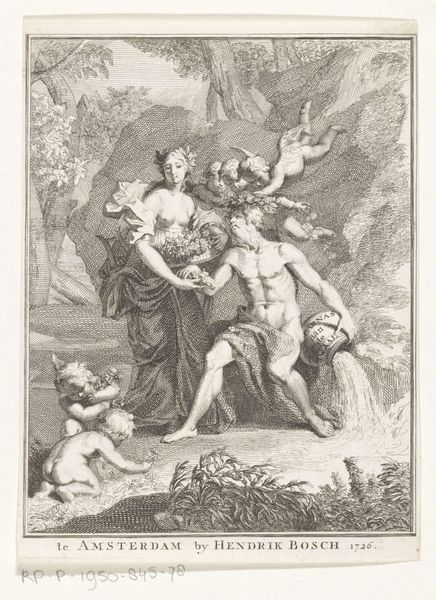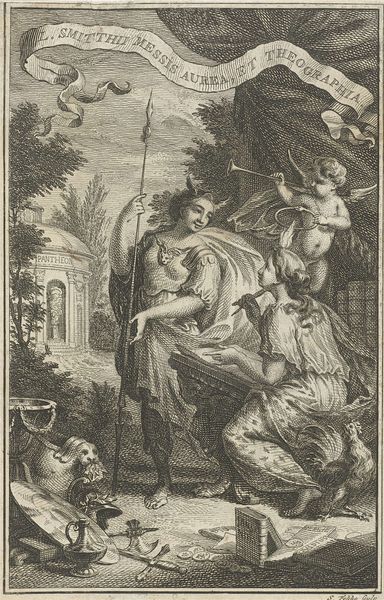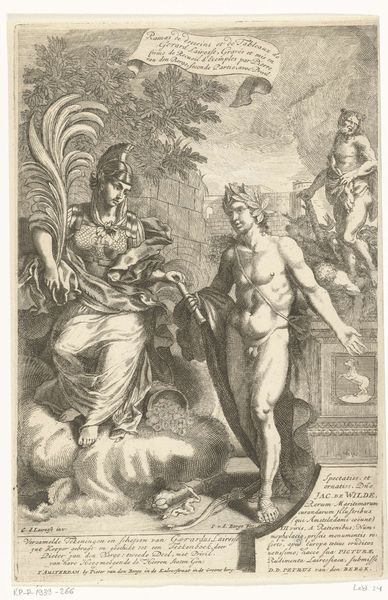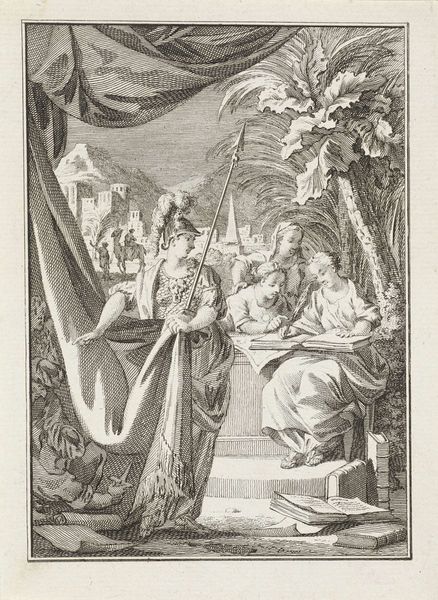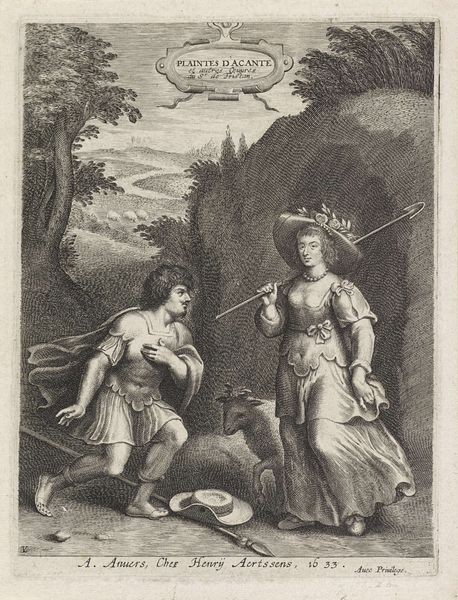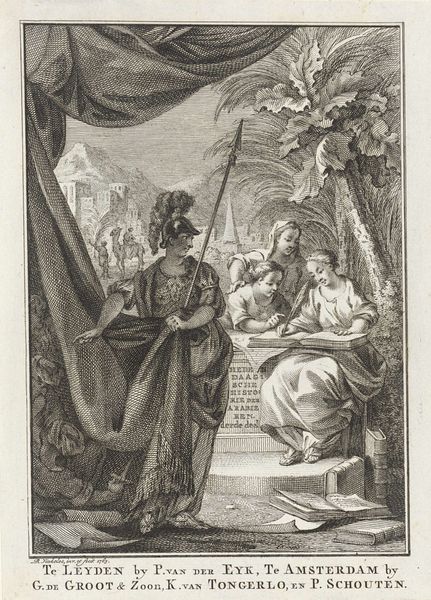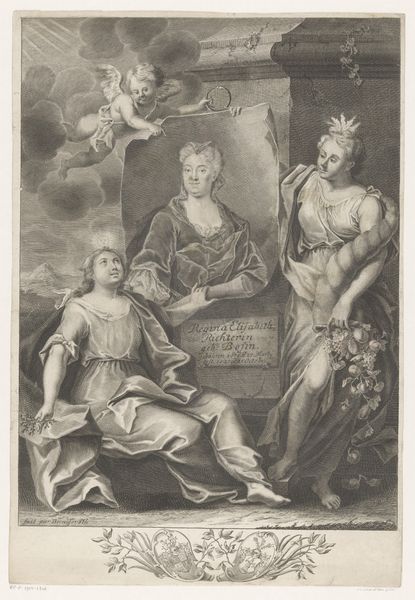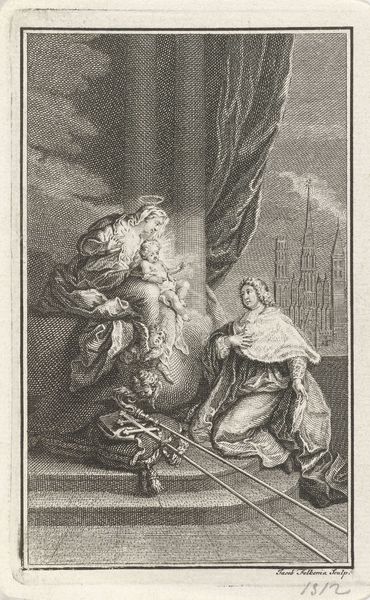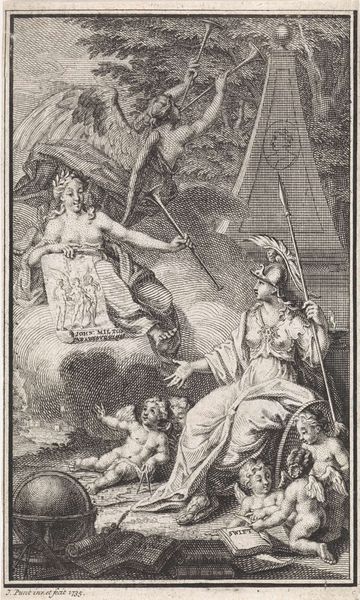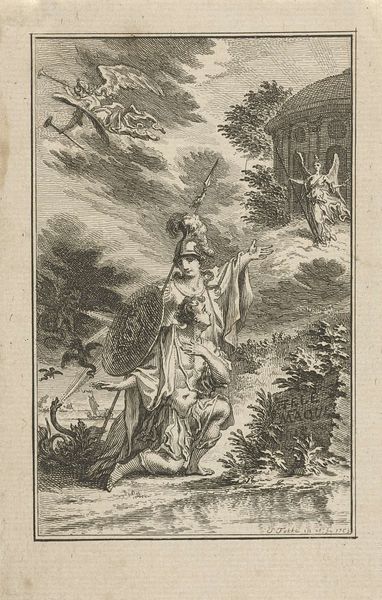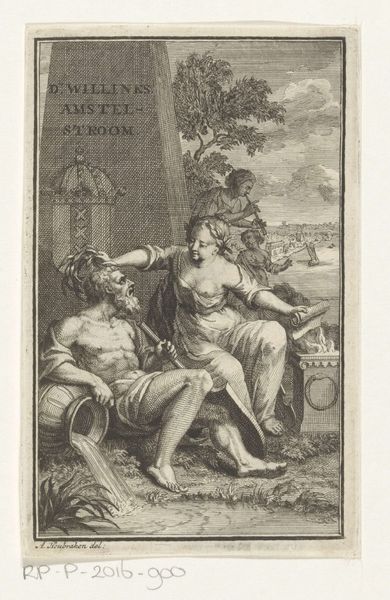
engraving
#
narrative-art
#
baroque
#
engraving
Dimensions: height 140 mm, width 93 mm
Copyright: Rijks Museum: Open Domain
Curator: The overall impression of this print, "Landschap met Poëzie en Inspiratie" by Jan Wandelaar, made sometime between 1714 and 1720, is so…laborious! The stark contrast created by the engraving medium emphasizes every minute line and texture. Editor: I see what you mean. It’s meticulously worked, certainly, but my eyes are drawn to the crowned figure in the center and the figure placing the laurel on her head. What do you make of them? Curator: The central figure embodies Poetry, right down to the crown and gown, holding the scroll in front of the bestial monster cowering on the left, weighed down, no doubt, by its own words which the poem refutes. Editor: Speaking of the labor again, let's look closer at how Wandelaar renders these elements. Engraving is demanding: all of that texture built up bit by bit, requiring immense control over the burin. There are faster and simpler techniques to realize an image, so I want to better understand his purpose. Was this accessible to the public, or part of a collection for scholars or nobles? Curator: Context is key, yes. Look at the small spirit attending to Poetry, she reminds me of classical allegories that signal authority. Perhaps there's a claim to truth embedded in this landscape as well. Note, that this piece dates to the late Baroque period, which historically indicates dramatic symbolism with high moral overtones that suggests an aspirational element in visual storytelling. Editor: It speaks to the investment and expenditure in cultural work. Not only of artistic time but social and economic value ascribed to imagery. In terms of how ideas themselves get made, so to speak. Curator: Agreed! Symbols, whether embedded culturally or specifically composed by Wandelaar, speak to emotional and psychological structures. How did viewers internalize this piece at the time it was made? And how might we reconsider their vision with what we now know about early 18th-century Holland? Editor: It highlights how art practices and aesthetics are entwined. Appreciating that requires understanding the specific material conditions that make something like this print possible.
Comments
No comments
Be the first to comment and join the conversation on the ultimate creative platform.
